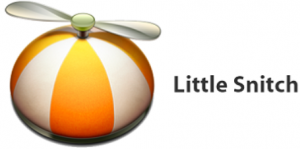
 Click the Restart Now button to finish the app removal from your Mac.įor the Little Snitch v.5, follow these steps to uninstall it:. In the window, select “ Also remove rules and settings” and click the Continue button. Also, you can find the uninstaller file in the following location: /Library/Little Snitch/Little Snitch Uninstaller.app.
Click the Restart Now button to finish the app removal from your Mac.įor the Little Snitch v.5, follow these steps to uninstall it:. In the window, select “ Also remove rules and settings” and click the Continue button. Also, you can find the uninstaller file in the following location: /Library/Little Snitch/Little Snitch Uninstaller.app. 
Double-click and choose the Little Snitch Uninstaller.Open the “LittleSnitch-4.0.5.dmg” file.Steps to delete Little Snitch v.4 from Mac: So please, read the guide to the end to entirely uninstall Little Snitch from your Mac. However, for both versions, you will have to check your Mac for the Little Snitch temporary files. Uninstall Little Snitch using its native uninstallerĭepending on which version of Little Snitch you use, the removal steps slightly differ. Deleting important macOS system files might damage your system. Please, be careful when you remove service files manually.We will explain how to find and remove application service files manually and how to do this automatically with a universal uninstalling tool.

We will explain how to get to the Library and find temporary files.
Applications’ support files are usually stored in the hidden Library folder. However, this doesn’t uninstall Little Snitch completely with all of its support files. Before writing this article, we checked the official Little Snitch removal guide, which says that all you need to do to uninstall the app is to drag and drop it into the Trash. Click any app, and the map to the right of the panel will show you where, on Earth, the services that app is connecting to are physically located.Important notes about uninstalling Little Snitch from Mac The taller the bar, the more bandwidth the app is currently using. Beside each app is a bar graph highlighting recent network activity. When you open Little Snitch Mini, you’ll see a panel on the left-hand side of the window with the list of programs running on your Mac. The interface is entirely free of jargon and technical terms, meaning anyone can use it and learn about what their computer is doing. There have always been applications like this, but Little Snitch Mini is different because of how comprehensible it is. And even if everything looks OK now, familiarizing yourself with your computer’s normal connections may help you quickly spot any suspicious changes. 
Noticing an app keeps connecting to servers in an unexpected country could be the first sign that you have a security issue. If you live in the United States, for example, there’s a good chance that relatively few of the services you use are based in places like Russia. This simple program will show you, at a glance, which apps are connected to the web and where those connections are in the world. You probably know that the applications on your Mac are constantly connecting to the internet, but what exactly are they connecting to? Little Snitch Mini is a free app you can use to find out.








 0 kommentar(er)
0 kommentar(er)
